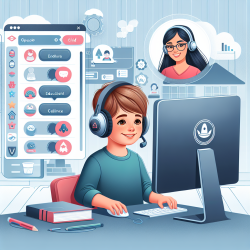As speech therapists, we understand the pivotal role we play in shaping the lives of our students. Our work goes beyond mere communication skills; it’s about unlocking the full potential of each child we work with. This is especially true when it comes to Individualized Education Program (IEP) planning and meetings.
IEP meetings can often be seen as a daunting task, filled with paperwork and protocols. However, they are a critical part of our mission to ensure that every child receives the tailored support they need. Here at TinyEYE, we believe that with the right approach, IEP planning can be a fulfilling and self-actualizing experience for both the therapist and the student.
Why Effective IEP Planning Matters
IEP planning is not just a legal requirement; it’s an opportunity to make a meaningful impact. A well-crafted IEP can set the stage for a student’s success, providing a roadmap that guides their educational journey. Here are some reasons why effective IEP planning is crucial:
- Personalized Goals: Tailoring goals to each student's unique needs ensures that they receive the most effective support.
- Collaborative Effort: IEP meetings bring together a team of professionals, including teachers, parents, and other specialists, fostering a collaborative approach to the student’s development.
- Measurable Progress: With clear, measurable objectives, it’s easier to track a student’s progress and adjust strategies as needed.
Strategies for Successful IEP Meetings
Preparation and collaboration are key to successful IEP meetings. Here are some strategies to help you navigate the process effectively:
- Prepare Thoroughly: Gather all relevant data, including assessment results, progress reports, and feedback from teachers and parents. This information will form the basis of your discussion.
- Set Clear Objectives: Define clear, achievable goals for the student. Ensure that these goals are specific, measurable, attainable, relevant, and time-bound (SMART).
- Foster Open Communication: Encourage open dialogue among all team members. Listen to the concerns and suggestions of parents and teachers, and be prepared to offer professional insights and recommendations.
- Utilize Technology: Consider using telehealth platforms to facilitate meetings, especially if team members are in different locations. Telepractice jobs offer flexibility and can make scheduling easier.
- Follow Up: After the meeting, ensure that everyone understands their roles and responsibilities. Schedule follow-up meetings to review progress and make any necessary adjustments to the IEP.
Taking the Next Step with TinyEYE
At TinyEYE, we are committed to supporting speech therapists in their mission to help students thrive. Our online therapy services provide a flexible and effective way to deliver speech therapy, making it easier to integrate into the IEP process. Whether you’re looking for telepractice jobs or need support with telehealth solutions, we are here to help.
We invite you to explore our resources and discover how TinyEYE can enhance your IEP planning and meetings. Together, we can ensure that every student reaches their full potential.
Are you ready to take the next step in your journey as a speech therapist? Join us at TinyEYE and make a difference in the lives of your students.










